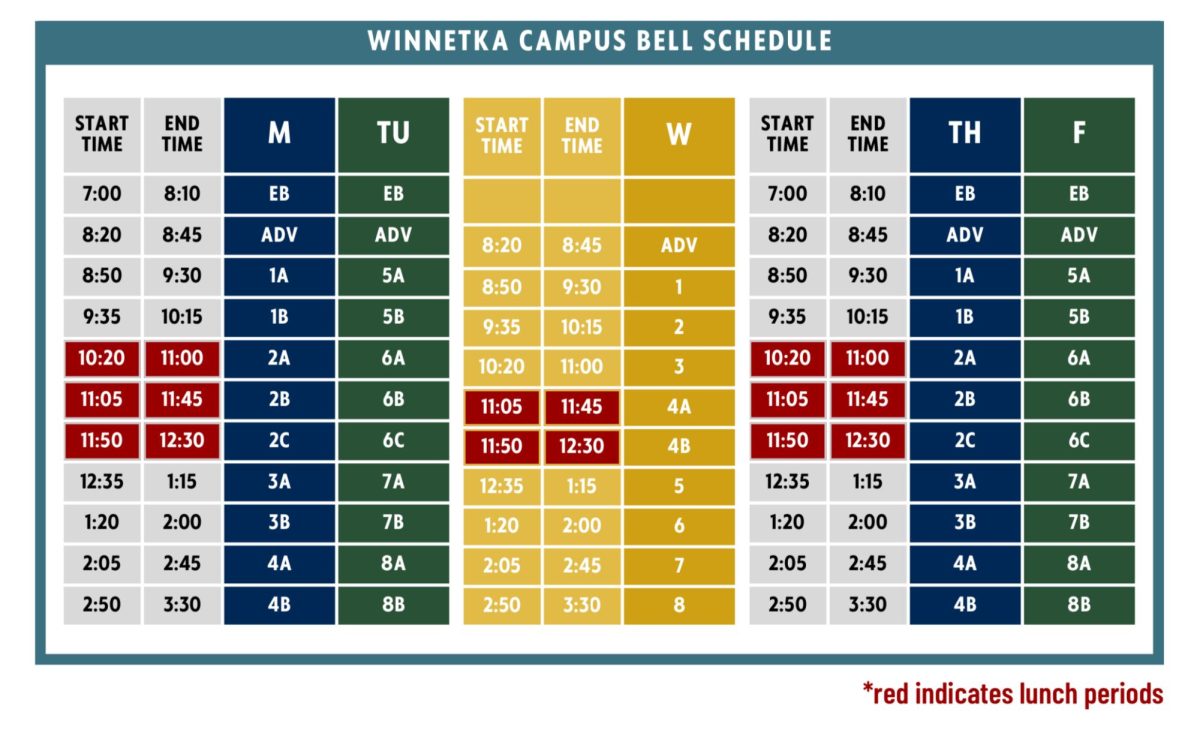For the fourth consecutive year, New Trier’s schedule has changed. When I first heard this news, I was optimistic. I was hopeful that the egregious A period lunch had been changed. Instead, the school has taken a step backward.
No, the 10 a.m. lunch seems here to stay, despite leaving students hungry throughout the school week. But now, the three-lunch-period schedule that students have become accustomed to has been reduced to just two, eliminating period 4C.
The result? Take one step into the cafeteria on an Anchor Day and you can answer that for yourself. 3,000 students divided into two lunch groups instead of three turns the regular frenzy of kids trying to buy lunch into mayhem. All the lines are longer, and the space is more crowded.
This shouldn’t come as a surprise. Fewer opportunities for people to buy food means more people every period and more time spent waiting.
Not only that, but now that there are only two periods during the 4 block, students who enjoyed two available periods last year now only have one, often spent eating lunch—or trying to.
The valuable time for students to spend working with friends or receiving help from a teacher is now gone.
And all of this has been done to make each class five minutes longer on Anchor Days compared to last year. Is there that much that can be done in five minutes? One more worksheet problem? One more thought in a class discussion? A one question quiz? I shouldn’t give teachers any ideas.
It’s not like students pay much attention during the last five minutes of class anyway. At least I don’t, between the frantic zipping of backpacks and anticipation of the bell ringing.
Making each period five minutes longer does provide some consistency by lining up the start and end times of classes with those on the regular Green and Blue Days. However, this comes at the expense of the original purpose.
The whole point of Anchor Days was to “anchor” the week, to add more balance, and to provide a midpoint where students would have more time to see teachers, friends, and catch up on work.
Now, they act as an anchor by adding weight, an additional burden to an already-crowded week.
If the schedule is going to keep changing every year, the early 2A/6A lunch period should be addressed instead of reducing the time available to students.







































